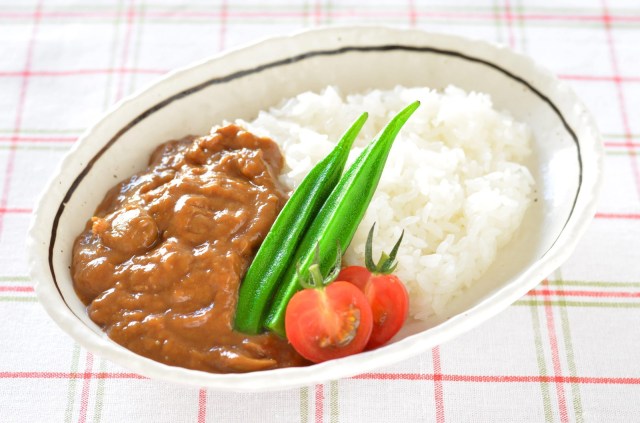Survey ranks the most popular Japanese curry dishes during winter

We all love Japanese curry, but what’s the most popular way to serve it this season?
There are some foods that you can’t imagine eating outside of their designated season. Shaved ice is a perfect summer treat, and do pumpkin-flavored things ever taste as good as when eaten on a cozy autumn afternoon?
The ever-popular Japanese curry is actually often thought of as a summer dish since its spiciness and warmth encourage sweat and help you cool down. However, its hearty warmth also makes it popular wintertime fare. A group of 50 “curry professionals” (graduates of Japan’s Curry University, a research program dedicated to the curry industry) were quizzed on their favorite ways to eat this comforting dish during the winter, to determine the season’s most sizzling serving suggestion.
Let’s count them down!
10. Curry Soba
#お家でご飯#夜ご飯#カレーそば
— kazuemon (@kazuemon12) August 9, 2020
野菜たっぷりpic.twitter.com/U0faeIf6AK
Curry udon is a famous way to have your curry and noodles too, but soba noodles are getting increasingly popular!
9. Curry Ramen
今日もカレーラーメン
— だいC (@daisaikoro) February 1, 2021pic.twitter.com/aa5NgrsPF0
Continuing the noodle trend, curry ramen uses a base of cooked Japanese curry to lend spice and flavor to the noodles, boiled egg, and other garnishes in your ramen bowl.
8. Ginger Curry
▼ This version is made with soybeans instead of meat!
2月3日は #大豆の日 なので、岩下の新生姜&大豆を使った「岩下の新生姜カレー」を紹介
— 宮島醤油|唐津舞台のショートムービー公開 (@miyajimashoyu) February 3, 2021
岩下食品さんと宮島醤油のコラボで昨年発売したカレーで、みじんぎりした岩下の新生姜と大豆ミートを使っています。
ヘルシーで爽やかな風味・食感を楽しめる岩下の新生姜カレー、ぜひお試しくださいpic.twitter.com/g1RzTTrydj
Ginger is a popular spice in the winter months anyway, due to its warming, comforting qualities. Here, baby-pink petals of pickled ginger are served alongside the curry to amplify its natural heat.
7. Curry Hotpot
みかど飯▼
— みかど
きのこの炊き込みご飯、豚汁、さつま芋の煮物他。
2枚目のカレー鍋、みかどのママ飯なんだけど天才的に美味しかったpic.twitter.com/O7J7B1jzQR
ご飯本2/28 (@mikado08) January 27, 2021
Curry hotpot, known as curry nabe, is slow-cooked in a clay pot to really stew all those delectable flavors together and provide a warming meal that sticks to your bones.
6. Spice Curry
朝は雨がすごかったですね!
— スパイスカレーHIRUDOKI (@HIRUDOKI1) February 2, 2021
でもお昼はポカポカ陽気暖かいですね!
テイクアウトも受け付けてるのでちょっと遅いお昼にどうですか?#カレー #curry #スパイスカレー #spicecurry #間借りカレー #下井草 #下井草グルメ #下井草テイクアウト #下井草ランチ #テイクアウト pic.twitter.com/jcmWJPZqQa
You might wonder why a curry even needs to be labeled as a “spice” curry. The title of this Osaka-developed curry dish actually refers to how it’s made without a typical curry roux and instead mixes the spices directly into the paste, as seen in Indian and Sri Lankan cuisines. This curry typically incorporates a lot of vegetables.
5. Intensely Spicy Curry
12/16 N.L.N.L.塚本店#激辛カレー ¥870(ライス大、ルー大、インスタ投稿で100円引き)
— アキア (@akiahnz) December 16, 2017
今日は #ニルニル塚本店 でニルってましたぁε
з
基本メニューは東三国と全く同じ
ε
з期間限定の激辛カレーはエグいくらいに辛くてマジで大汗かいたわぁ…
ε
з
#NLNL塚本店 #ニルってますかぁ pic.twitter.com/DLOK6yUfq1
Intensely spicy curry, or gekikara curry, is titled after its level of spicy heat. This curry’s selling point is its searing spice, so you’ll often see chili peppers and an ominously dark red roux used in these dishes. What better way to blast away the cold?
4. Soup Curry
今日のランチは久しぶりのスープカレー!!!奥芝商店さん!!!
— おにぎり (@OnigiriAgent) January 28, 2021
最高#スープカレー#奥芝商店 pic.twitter.com/ebKNtvQAHT
This colorful curry dish is a Sapporo specialty that typically uses tender chicken and flash-fried vegetables in its spicy, aromatic broth. Definitely try some if you happen to be in the area– it’s another dish packed to the brim with appealing vegetables.
3. Baked Curry
今日の昼飯は焼きカレーセット。 pic.twitter.com/a7TKd78Ea1
— シラヒゲ (@v6UdSzJzEKcpiv0) January 31, 2021
Baked curry, or yaki curry, is another local specialty. This one hails from Kitakyushu in Fukuoka and involves ladling a generous dollop of cheese atop the curry atop the rice, then putting the whole thing in the oven and baking it until everything gets crispy and toasted golden-brown. Hot, melted cheese has been a real hit over the past few winters, so it’s no surprise this dish ranked so highly.
2. Winter Vegetable Curry
用事終わったからサンマルコでランチ
— natsumi (@natsumi_TA1002) January 14, 2020
冬野菜カレー
蓮根カリカリでおいしかったpic.twitter.com/G2tIsaUuF3
A Japanese curry can contain anything, but if you suggest adding vegetables into the equation most Japanese people will anticipate summer vegetables like okra, eggplant, and zucchini. The winter has plenty of incredible complementary options on offer, too though: ginger, green onions, lotus root, radishes, and burdock all make great additions!
So who’s the king of winter curry dishes?
The curry professionals have decreed…
1. Curry Udon
2日目のご馳走カレーと冷凍うどん
— 水樹羽色@ゲームと色々。乳がん関連 (@sihome0509) February 2, 2021
カレーうどんΣd(・ω・d)ウマウマ!!!#お昼#カレーうどん#うどん#ランチ pic.twitter.com/jgQXIkPKZn
Thick, floury noodles…chunky, sweet stewed carrots that practically melt in your mouth…and of course, a thick curry-flavored broth to tie it all together. Curry udon is one of the most beloved ways to eat both Japanese curry and udon noodles in Japan, and that goes double for the cold, hard winter months. People are always coming up with new ways to make it, too!
What’s your personal favorite way to consume curry, and does it change throughout the year? Let us know in the comments!
Source: Yahoo!Japan News/Suits woman via Otakomu
Top image: Pakutaso
● Want to hear about SoraNews24’s latest articles as soon as they’re published? Follow us on Facebook and Twitter!
Credit:


0 comments:
Post a Comment